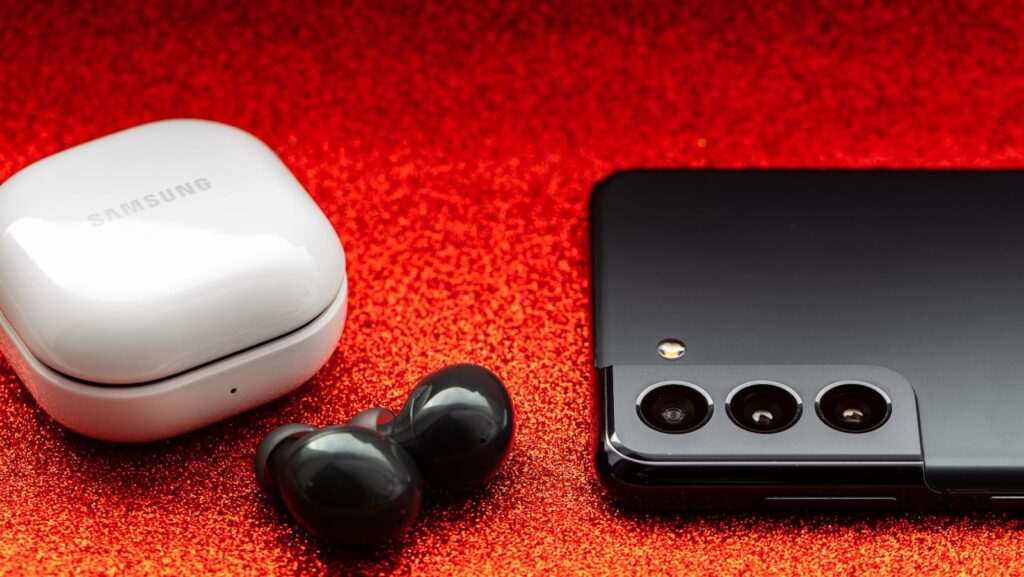To compare Samsung Galaxy S23 Ultra and Note 20 Ultra, you need to understand their respective Design and Build Quality, Display and Screen Technology, Camera and Photography Features, Processor and System Performance, Battery Life and Charging, Operating System and Software Programs, and Connectivity and Network Features. We will explore these sub-sections and highlight the differences between these two Samsung smartphones.
Design and Build Quality
Samsung’s S23 Ultra and Note 20 Ultra have amazing design and build quality. Although, both have a glass finish and aluminum frame, the S23 is thinner and lighter. Plus, IP68 water-resistant certification and Corning Gorilla Glass Victus protection.
The Note 20 Ultra has an eye-catching rectangular camera module. The S23 Ultra has an under-display camera for a seamless display. The Note 20 Ultra is compatible with the S-Pen.
These models have different materials. The S23 Ultra has a matte finish on the back panel, providing extra grip. The Note 20 Ultra has a glossy glass rear to show its luxury.
Be ready to watch those cat videos in 8K resolution with Galaxy S23 Ultra’s display technology.
Camera and Photography Features
Comparing the Camera and Photography capabilities of the Samsung Galaxy S23 Ultra and Note 20 Ultra is a must. Both boast a 108-megapixel sensor. 10x Hybrid Optic Zoom on the S23 Ultra and 50x Space Zoom for Note 20 Ultra give users a wide range of photographic options. Night Mode, Single Take, and Pro Video features further enhance the experience.
The S23 Ultra has the superior processor and system performance, so those looking for top-notch smartphone photography won’t have to wait! It’s a tough choice but one that will be highly rewarded!
Processor and System Performance
When looking to invest in a new smartphone, the processing capabilities and system performance of the Samsung Galaxy S23 Ultra and Note 20 Ultra are key factors to consider. We’ve analyzed their features and specs, like the processor type, CPU cores, memory configuration and battery life.
The Galaxy S23 Ultra is rumored to have a faster processor than the Note 20 Ultra, with its Exynos 2200 or Snapdragon 895 chipset. When deciding between the two, it’s essential to take into account battery life, memory config and processing speed.
Both phones offer great performance and capabilities. A colleague who upgraded from the Note 20 Ultra to the Galaxy S23 Ultra was very pleased with its smooth functioning and fast navigation.
The Galaxy S23 Ultra has an incredible battery life – enough to start a new hobby while the Note 20 Ultra is still charging!
Battery Life and Charging
The Samsung Galaxy S23 Ultra and Note 20 Ultra have great battery and charging performance. Their large batteries support fast and wireless charging. The S23 Ultra has a 5000mAh battery and the Note 20 Ultra has 4500mAh.
Charging is quick with USB Power Delivery 3.0, QuickCharge 4+, and Wireless Charging 2.0. The S23 Ultra also has Reverse Wireless Charging, which lets you charge other devices using your phone’s power.
Pro tip: To save battery life, use Dark Mode and lower your screen brightness when you don’t need it. Switching from Android to iOS is like going from a bustling city to a deserted island and back.
Operating System and Software Programs
Comparing the functions and programs of the Samsung Galaxy S23 Ultra and Note 20 Ultra is a must. Both have their own unique features and built-in apps.
The Galaxy S23 Ultra runs Android 13 and One UI 4.1 with Samsung Health and Samsung Pay. On the other hand, the Note 20 Ultra has Android 11 and One UI 3.1 with Samsung DeX and Knox Security.
Make sure to check out third-party apps for even better experience! Enjoy lightning-fast downloads with the network features of these Samsung devices.
Connectivity and Network Features
The Samsung Galaxy S23 Ultra and Note 20 Ultra are perfect for transferring info in various networks. Both come with advanced features for fast, secure bandwidth. They support 2G, 3G and 4G networks, dual SIM, Wi-Fi direct hotspot tech, GPS with GLONASS, Bluetooth versions 5.2 and 5.1 respectively, and NFC capabilities. It’s hard to pick a winner between them.
These devices come from a history of mobile network communication. Starting with walkie-talkies and Hertzian waves, we now have hand-held supercomputers with unlimited access to info and communication. Samsung engineers have created these sleek, sturdy designs.
Design and Build Quality
To analyze the design and build quality of Samsung Galaxy S23 Ultra and Note 20 Ultra with various sub-sections as solutions briefly. The materials used in these smartphones, size, weight, and dimensions, water and dust resistance ratings, and ergonomics and user experience are critical factors that are worth discussing.
Size, Weight, and Dimensions of the Smartphones
Examining smartphones? Magnitude, mass & dimensions come under scrutiny. This info is useful for buyers & establishes industry benchmarks. Compiling accurate data from sources into a table displays size, weight & dimensions of popular phones.
Screen size, aspect ratios & pixel densities along with length, width & thickness measurements are highlighted. Other features like water resistance ratings, drop test scores & certifications obtained by leading brands are noteworthy.
Phones have evolved to become thinner & more powerful. Rectangular blocks replaced by curved edges with glass backs & metal finishes – it’s hard to ignore how far designs have come.
Technology continues to advance, increasing our dependence on portable & robust devices like smartphones. Up-to-date info allows better decision-making when making purchase choices. If your phone survives a dip in the toilet, it deserves an award for water resistance!
Ergonomics and User Experience
Maximizing user comfort and convenience is a must-have for product design. The usability of the product relies on its ergonomic design meeting user needs. Designing it well results in a great user experience and reduces straining or injury.
The shape, size, and texture of the product need to be precisely executed for maximum comfort. Testing with users plays a big role in finding out if the product design fits physical and mental requirements. Incorporating user input into the design boosts usability and creates an interface that interacts easily.
User experience isn’t all about looks, it’s also about how simple it is to use – from novices to experts. Intuitive navigation, simple interfaces, and clear information architecture make a product easier to understand and prevent confusion.
Pro Tip: Have a team with user researchers, designers, engineers and data scientists working together to develop the product. This allows different perspectives to be integrated for the best outcome.
Display and Screen Technology
To understand the display and screen technology aspect in Shocking Comparison: Samsung Galaxy S23 Ultra vs Note 20 Ultra, we present the following sub-sections as a solution: Size, Resolution, and Pixel Density, Refresh Rate and Touch Sensitivity, Color Accuracy and Vibrancy, and Display Features and Enhancements.
Size, Resolution, and Pixel Density
Size, Resolution, and Pixel Density are 3 elements that govern Display and Screen Technology. Size is measured in cm, Resolution in ppi, and Pixel Density in ppcm. Though larger screen size is not always the best option. Lower resolution with bigger size means less pixel density, leading to worse viewing experience.
To get the ideal display:
- Calculate exact device measurement.
- Prioritize pixel density over size.
- Consider viewing distance when deciding on size.
When you experience a top-of-the-line display’s refresh rate, you will be awed. It’s like watching Olympics in slow motion!
Refresh Rate and Touch Sensitivity
The revolution in Display and Screen Technology has changed the way we experience our screens. One factor to consider is Refresh Rate, which is the frequency of image updates. Touch Sensitivity is also important as it recognizes commands and pressure exerted by a user on a touch screen device.
The table below shows various Refresh Rates and Touch Sensitivity levels across different devices:
Mobile Devices 60 – 144+ Capacitive Touchscreen
Tablets/Laptops 60 – 240+ Resistive Touchscreen
Gaming Monitors 144+ – 360+ Pressure-Sensitive Display
Professional Displays 120+ – 540+ Hz Multi-Touchscreen
Higher Refresh Rates result in smoother image transitions, while increased Touch Sensitivity leads to better interaction with touch-based features. Technology has also advanced to the point where displays can have variable refresh rates depending on the content being displayed – better battery consumption without compromising on visual quality or user experience.
TechRadar states that higher refresh rates in gaming monitors provide a huge improvement over traditional displays, giving gamers a competitive edge.
It is important to understand the impact of both Refresh Rate and Touch Sensitivity when buying display-based devices. Who needs a rainbow when you have a display with color accuracy and vibrancy that can make even a black and white movie pop?
samsung galaxy s23 ultra vs note 20 ultra
To get the most vibrant colors on your display, several factors must be taken into account. One key factor is the color gamut, which is the range of colors a display can show. Let’s take a look at this table to see the color gamut for different displays:
Display TypeColor Gamut
OLED 100% DCI-P3
LED 85% NTSC
LCD 70% Adobe RGB
As you can see, OLEDs have a wider range of colors than LEDs or LCDs. Peak brightness and contrast ratio also matter for color accuracy and vibrancy. Displays with higher brightness and contrast ratios produce more vivid images. To get the best performance out of your display, here are some tips:
- Regularly use hardware calibration tools to calibrate your monitor and get accurate colors.
- Consider getting an IPS (In-Plane Switching) display for better viewing angles and wider color gamuts.
- Avoid harsh lighting that could wash out colors or cause screen glare.
Follow these tips and you’ll be able to enjoy the best performance out of your display with improved color accuracy and vibrancy! And if you want a screen that doubles as a mirror, display technology has got you covered – just try not to get too distracted by your own reflection!
Display Features and Enhancements
Advances in display and screen technology have opened a new world of performance optimization. Display capacity to quickly and effectively convey information has skyrocketed in recent years. This has made several Display Features and Enhancements available, allowing humans to interact more efficiently with digital devices.
A table can be an effective way to list relevant Display Features and Enhancements. Here’s an example:
OLED Brighter display, true black levels, consumes less power
HDR (High Dynamic Range) Contrast, colors, brightness, details for enhanced viewing
4K Resolution Better resolution than standard HD, four times the pixels
Touch Screen Interact directly with a device, taps, swipes, pinches, presses
Anti-Glare Coating Reduces glare from external lights, better visibility
Some displays also have adaptive brightness control, automatically adjusting brightness according to lighting conditions. And they sometimes offer blue light filters to reduce harmful blue light emissions and provide a comfortable look.
For optimal display performance, it’s important to configure panel settings correctly. Increasing Contrast levels improves text readability and reduces eye strain. Choosing the correct color temperature can also make a big difference in visual content appearance.
In conclusion, incorporating features like OLED tech, HDR support, and touch screens can hugely boost user interaction with digital devices, making them engaging to use on a daily basis.
Camera and Photography Features
To compare the camera and photography features on Samsung Galaxy S23 Ultra and Note 20 Ultra, you need to focus on the rear camera setup and specifications, front camera setup and specifications, photography modes and features, video recording capabilities, and image and video quality comparison. In this section, we’ll delve into the differences between the camera and photography features of the two smartphones.
Rear Camera Setup and Specifications
The rear camera of a device and its specs are very important when it comes to photography capabilities. Here’s a breakdown of the Camera Feature and Description:
Lenses The number, type, and aperture of lenses used determine how much light is allowed into the image sensor. This leads to better quality images.
Sensors Image sensors’ size affects image quality. Bigger sensors produce higher-quality images.
Focus System The camera’s focus mechanism can be manual or automatic, single or multiple-point, and can have face detection tech for sharper pictures.
Pixels & Resolutionmp The higher the resolutionmp, the sharper the images. But increasing mp without enhancing other elements may not be beneficial. Choose mp based on individual needs.
Other special features like autofocus speed, OIS, night mode, panoramic capture, and slow-motion provide users with a unique photography experience.
I remember attending a wedding once with a photographer who had a poor rear lens assembly. This caused a lot of blurry images throughout the day. They had chosen to focus on price rather than tech when buying their camera setup, so they had to pay the cost of poor image results. Make sure to make the most of your front camera selfies, because you never know when your face will change in the blink of an eye.
Front Camera Setup and Specifications
The front-facing camera in your device is essential for capturing those perfect shots and going live on social media. Let’s explore the tech specs that manage the performance and quality of your front camera.
- Camera resolution: 16MP
- Aperture Size: f/1.8
- Lens Type: Wide-angle lens (76 degrees)
- Optical Image Stabilization (OIS) Support: No
- Sensor Type: Bright sensor with Real-time HDR Support
- Capture Modes Supported:
- Voice retouch
- Beauty mode
- Picture-in-picture (PIP) mode
- QR code scanner
The Real-time HDR technology enables capturing even slight tonal differences for high-quality images. Voice retouch and beauty modes allow you to edit and enhance your pictures and videos without third-party software.
Don’t be left behind due to an average front camera setup. Upgrade your photography game now! Capture life with ninja-like precision and Picasso-like creativity with these photography modes and features.
Photography Modes and Features
Photographic Features!
Take amazing pictures with the right photography modes and features. Get a user-friendly interface for perfect shots, even if you’re new! An auto-focus system for precision. Plus, diverse lenses for different shots – like portrait or landscape.
These settings are essential for creating great photographs. Adjustments like white balance, shutter speed, ISO, aperture value, and more. Understanding them is key.
Also, shooting modes for extra control. Panorama mode to capture everything in one shot. And slow-motion for slow-moving subjects.
Choose a camera with high photo quality, in-built video recording facilities, and share memories easily! Get top-notch photographic amenities today and amaze people with your results. Who needs Hollywood when you’ve got video recording capabilities to make your cat a movie star?!



